Trigger warning: residential school violence
We sat with Harvey and Dolores on their porch in Sagamok, a few kilometres south of Massey along the Spanish River. At first it was a feeling, and later on as they were greeted at the pow wow it was a certainty, that Harvey and Dolores were stalwart members of their community. They both grew up in Sagamok and were as deeply rooted in that place as the trees around us.
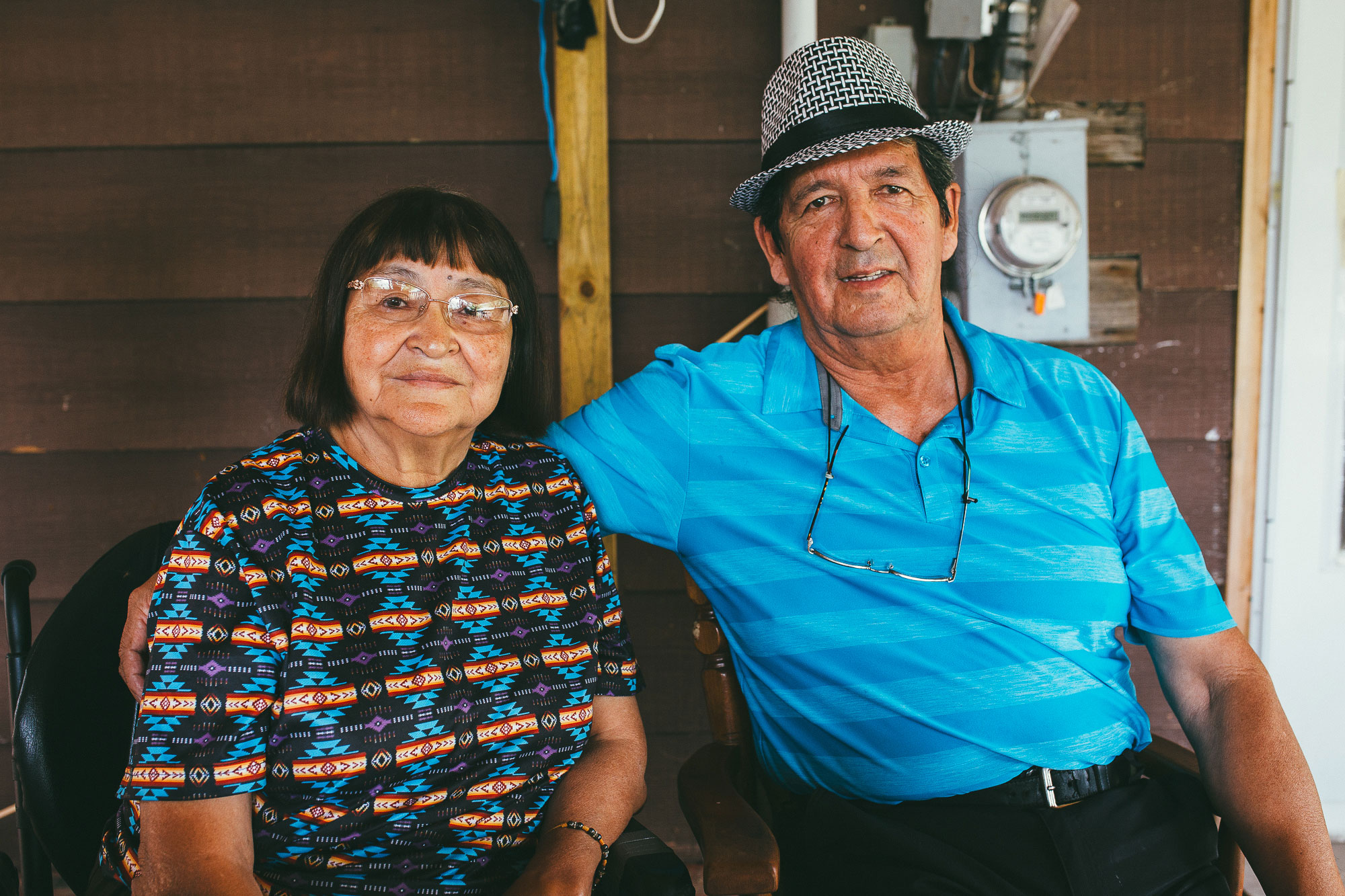
Harvey and Dolores were fluent in Anishnaabemowin. The first thing they talked about was language and what that meant to them. “The reason the Anishnawbek, the Aboriginal people have a lot of these English names,” said Harvey, referring to their last name Trudeau, “is when they enacted the Indian Act.” He spoke a rapid sentence of Anishnaabemowin, then translated. “They were not able to speak, to say our names or write our names. Ojibwe is supposed to be an unwritten language. It’s only now, most recently, that someone developed a method of writing it.”
Right away, I could tell that Harvey was offering a glimpse into a different worldview. In European culture, writing is essentially synonymous with language. For Harvey, language meant something else. “Our language has historically been handed down from generation to generation through oral transference and mental retention. There was nothing written. When they were negotiating the treaties, in our treaty of 1850, the Anishinaab did the oration from here,” he pointed to his heart, “from here,” he pointed to his head, “and from the mouth. They spoke of what they wanted, and their intents and wishes.”
Dolores spoke about her own family experience. “My dad,” she began, “their whole family, they only spoke our language. Even right until the end, they spoke our language. We grew up with Ojibwe as our first language. And it didn’t take long for it to just be lost. I have a hard time speaking our language to our grandkids. But they hear it often and they know what I’m saying, if I say it over and over they’ll eventually get it. So that’s what I’m trying to do with them now, is to teach them that way.”
“They’re good readers, but if you read it you don’t know what you’re saying. It’s a feeling language. They have to feel it in order to understand.”
As part of the Sagamok Che-Anishnawbek Council, Harvey and Dolores support the Young Warriors Youth Council in offering Anishnaabemowin Enjigbeshing Language Camp, a community-based language immersion event. In Sagamok’s September 2017 issue of Waabaagaa Giizis, Harvey was quoted: “If our generation fails to pass this language down to the children, it will be lost forever. The Anishnaabemowin we speak is a gift given to us by the Creator. The Creator entrusted us to maintain this language and also to keep the Culture alive. It is expected that we walk the path that was taught by our Ancestors.”
Language, in short, was an integral part of who they were.
“Colonization, assimilation and indoctrination,” said Harvey. “That’s what happened at the residential schools. You do it or you get beat. I was there, I was there in residential school for a year.” He now works with an organization that offers counselling and support to residential school Survivors. “You hear lots of stories about those things, innocent people. Even our people, the Anishnawbek, don’t really understand how profoundly that affected us.”
Dolores said that only one member of her family went to residential school. “He went when he was a little boy, and he didn’t go that long because he wrote left-handed, he was punished. His hands were slapped every time he wrote with his left hand, so he ran away, come back home, and that was it.”
Even though she and her family didn’t experience residential schooling directly, Dolores was still clear on how deeply she felt its impacts. “You’re all affected, in some way, of the ones who went to residential school. The community was affected, and it all went down to the individual person.” She described her experiences at an Indian day school. “There was some of that too, there was some abuse of that. The teacher made us all line up in front, the ones with the skirts, and we had to lift our legs way up. So he’d be standing there. That wasn’t right. And he’d give us the strap for no reason at all.”
Her story was a reminder that residential schools were only part of a larger system, from education—residential schools, day schools and provincial schools—to discriminatory laws, prohibitions, land rights, and other pieces of the ongoing process of colonization.
“All these other things that came to be, like the Sixties Scoop. ‘Now that the kids are on the reserve, we have to get them out of there somehow.’ So it was with the Sixties Scoop. A lot of them were my next-door neighbours that were taken away.”
“They have an anger inside. That’s why we have our traditional ceremonies, our sweat lodges, to bring that out as community, to restore good feelings about each other and about ourselves.”
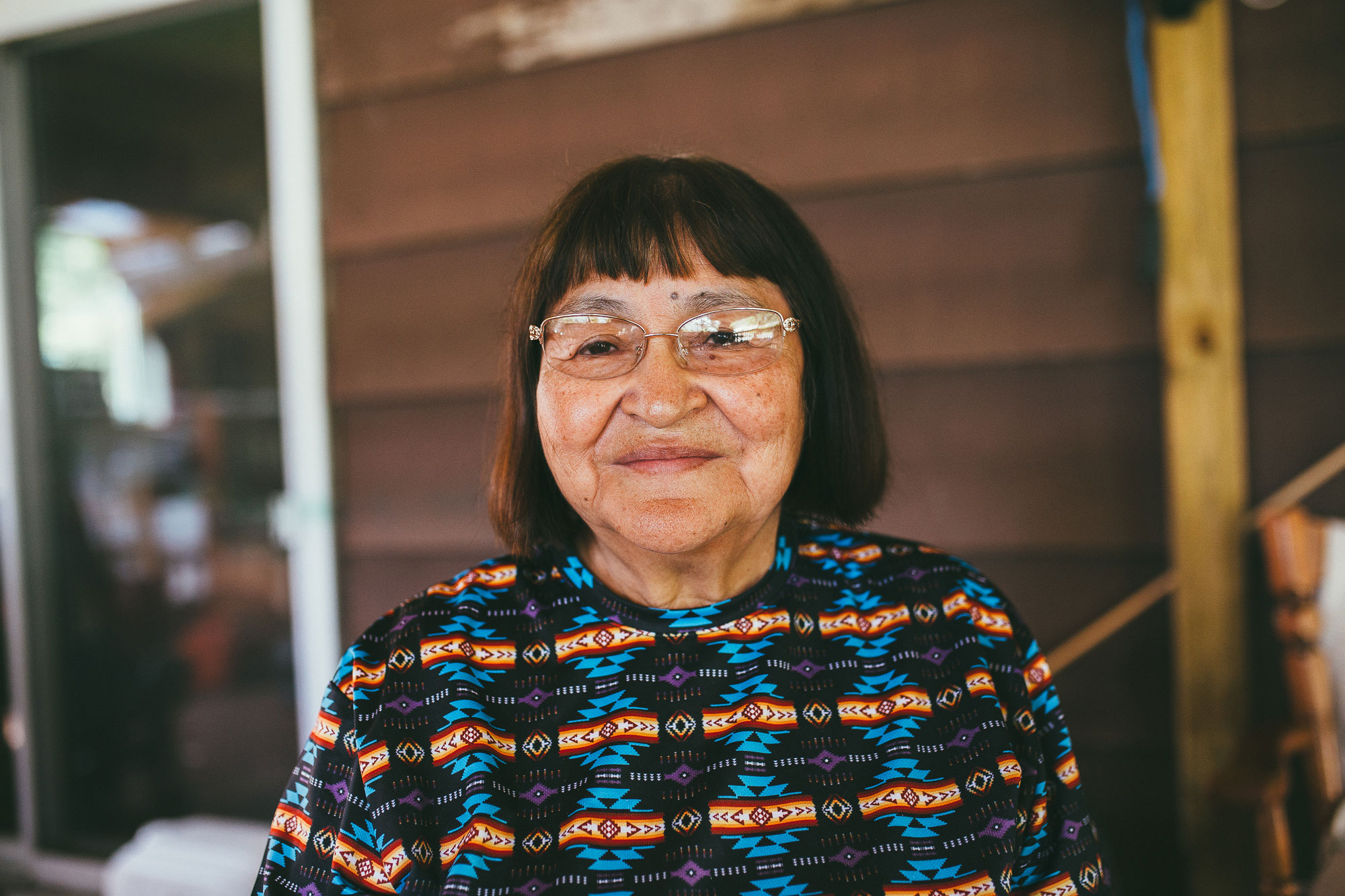
“The general population does not know of the history of the Indian residential school, because it’s absent from the curriculum of the provincial schools, that’s why people don’t know,” said Harvey. “Even our children don’t know those things, because many of those that were in residential schools never spoke of it. Now, we’re in a very significant time period where the government of Canada, the government of Ontario, and the people of this country have to realize and place in their minds that somebody messed up. They messed us up too. They have to realize that. They have to make good, fix what they did.”
“A lot of the fixing up has to be done by ourselves too,” he added. “When we talk about the culture and the language, it’s us that has to teach that. Because the Caucasian does not know our language, they don’t know our cultures. It’s us that has to bring that back.”
But part of the fixing process is understanding what happened. Harvey told a story of the Mohawk Institute Residential School. “Down in the ‘mush hole,’ they called it, down in the Brampton area, we have stories where when people spoke the language, they were punished. They put a needle through a person’s tongue, right through the tongue, so they wouldn’t be able to—”
“A child,” interrupted Dolores.
“A child,” repeated Harvey.
“You might have heard the story about the electric chair up in Thunder Bay. A number of them that were up in that area made reference to the electric chair. They knew when someone was down there because when it was being used, the lights would flicker in the whole building.” An article about the Mohawk Institute in the Toronto Star includes the recollections of some of its Survivors. “Their cruelty showed through,” said Bud Whiteye, who was nine years old when he was taken to the school. He described two boys who were caught running away were brought back, stripped naked and beaten with a thick leather strap. “He whaled on that boy until he couldn’t scream anymore. They heard it down in Brantford.”
Dolores spoke again.
“Those are children that were sixteen and under.”
“I don’t think you’ll ever forget,” said Dolores. “You may think that you’re going to forgive, but I don’t think you’ll ever forget. That trauma started when you were like three years old to sixteen, so that’s the most formidable [sic] years of your life. Those are the years where you’re learning, that you’re setting your life, how you’re going to live your life. Then to be taught to live in trauma? How are you going to learn to get out of that? It’s embedded in you.”
“The healing process has to occur on the personal level, the family level, the community level, and then—for lack of a better word—the national level. The healing’s got start at the personal level and work it’s way all the way up to the nation. People have to heal, to forgive, to reconcile.”
Part of the power of this experience, for me, was that this discussion about violence was followed by a demonstration of healing. It was sort of coincidental. The day we visited Harvey and Dolores was also the first day of the annual Sagamok pow wow, and they invited us to come with them.
I think you have to go to a pow wow yourself to truly feel the community spirit, the resilience, the intergenerational teaching. There was sacredness and there was laughter. Elders led the opening ceremonies and tended the sacred fire. Children ran around them playing tag. Some of those present were long-time community members, others were from far away.
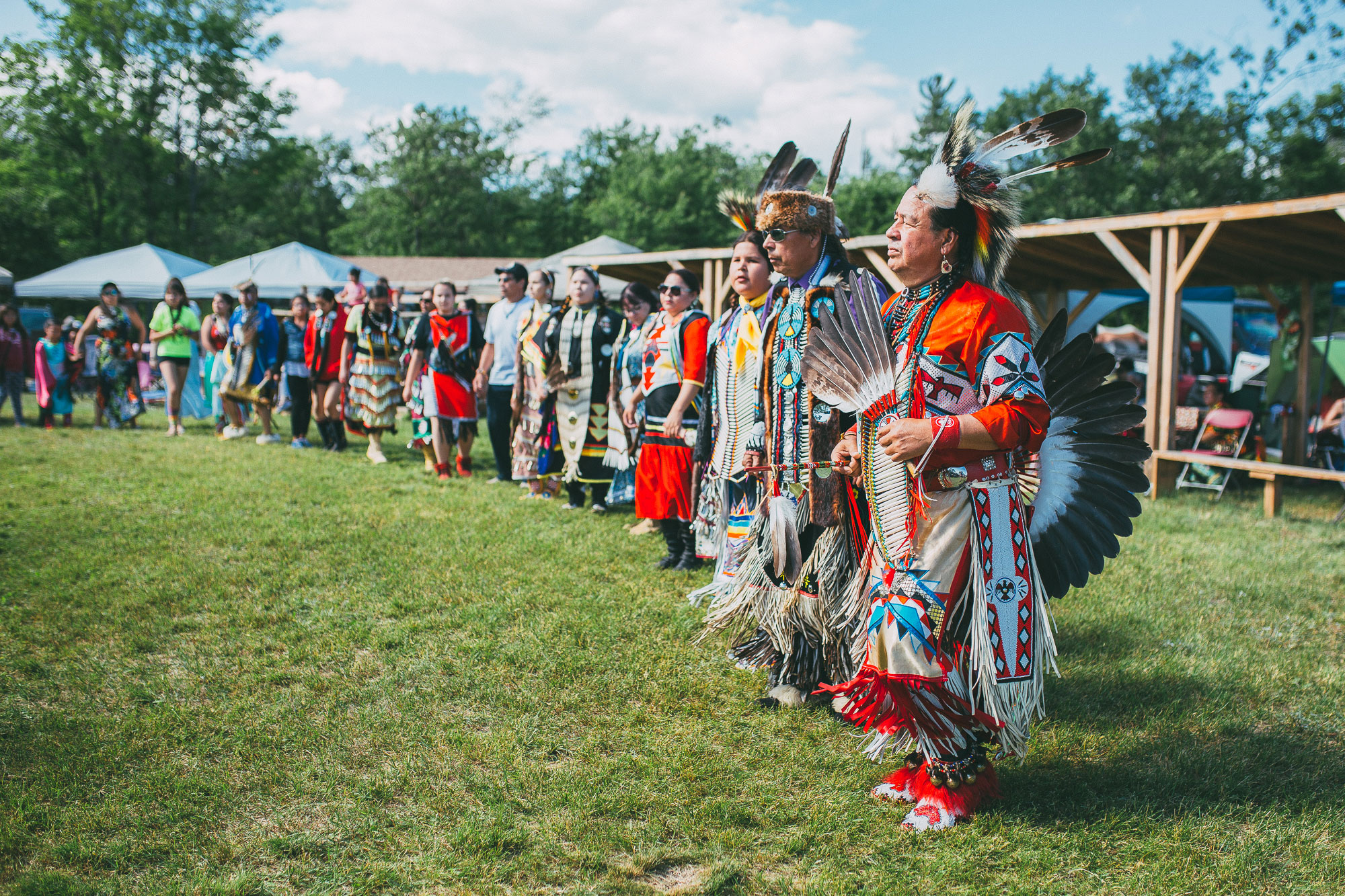
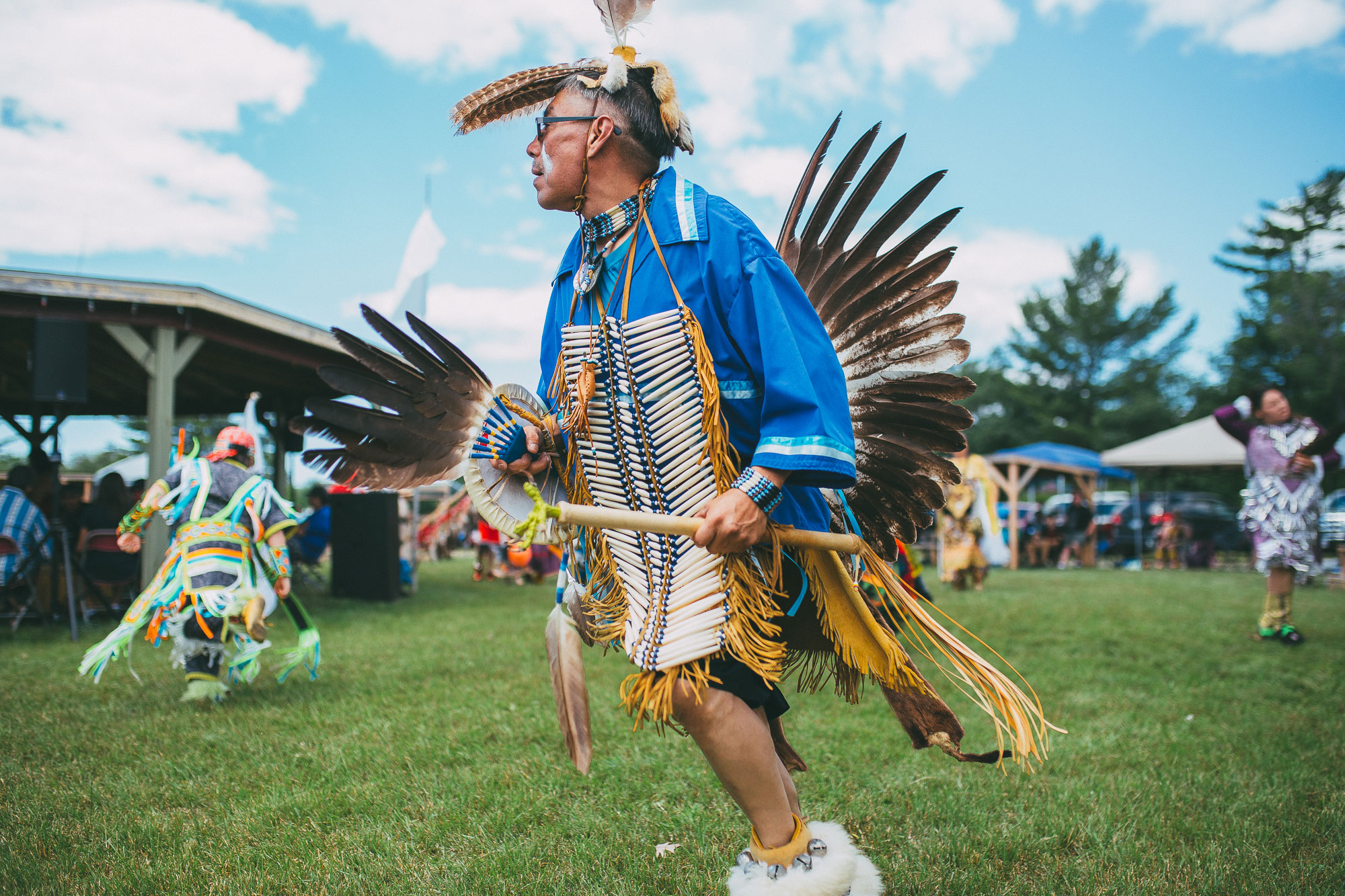
At one point, there was a dance to honour the first dance of two young boys in child-sized regalia. Dolores held my hand. “See those kids,” she said, nodding into the circle. “That’s the age they would have been taken.”
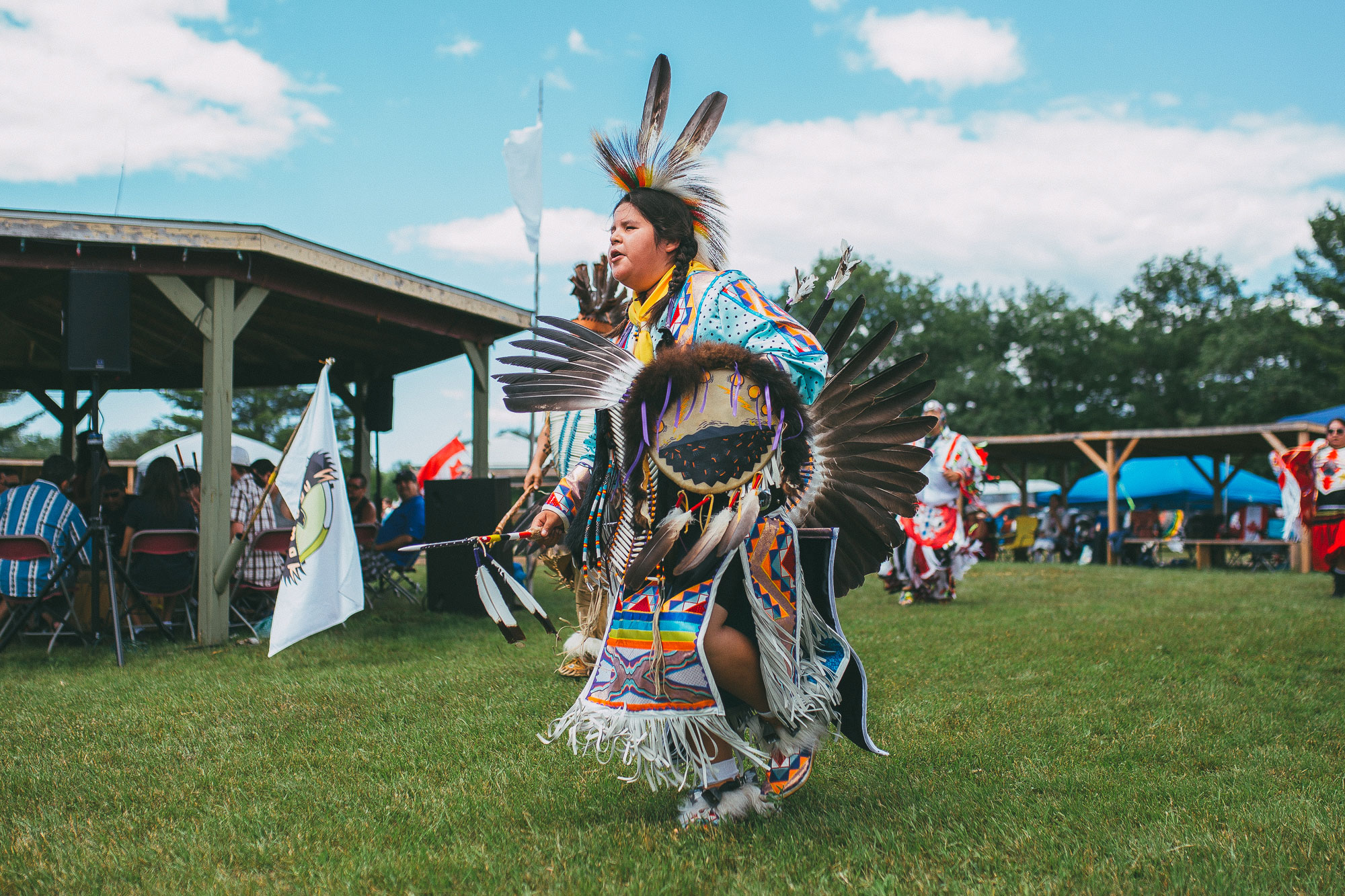
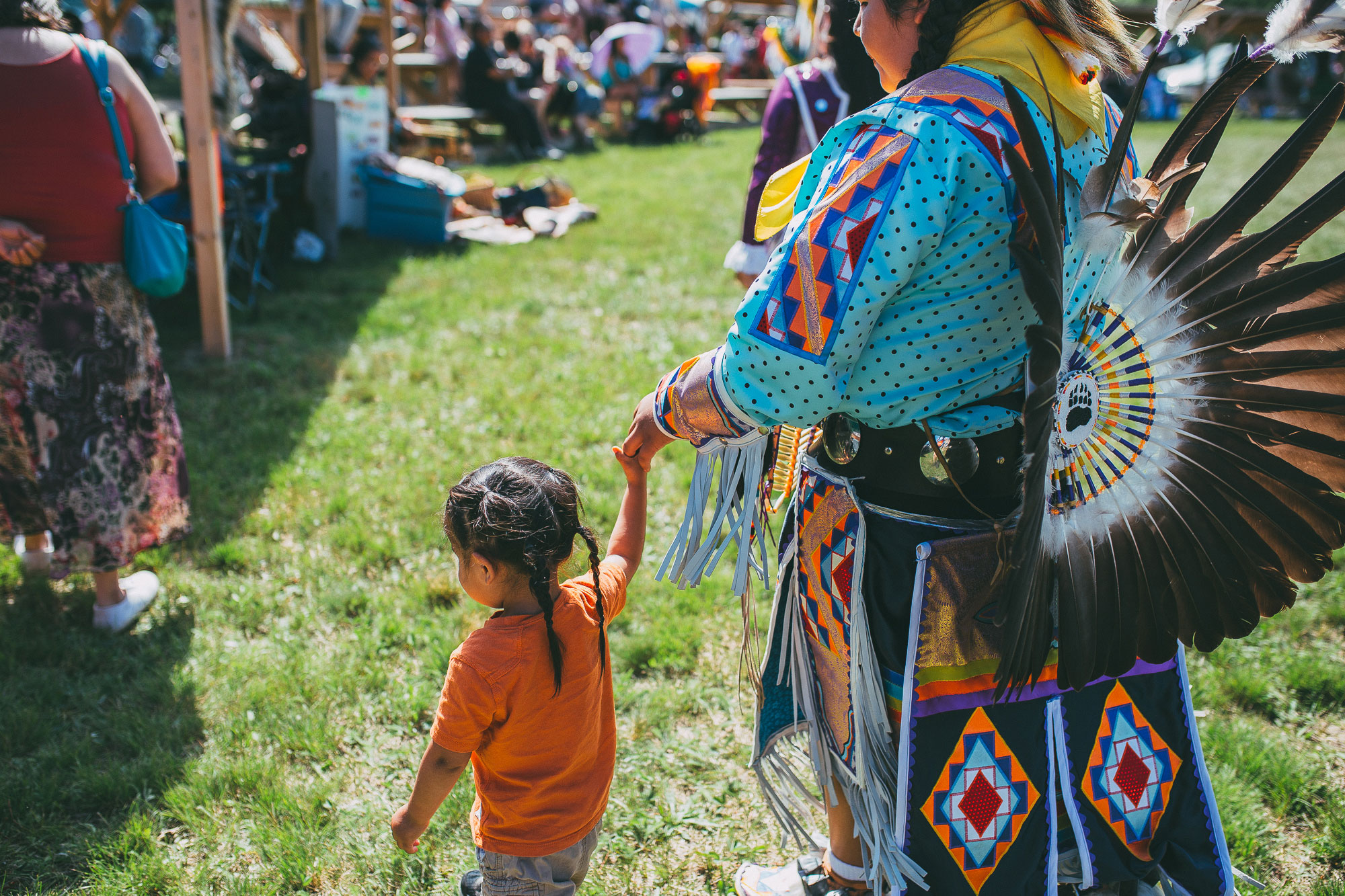
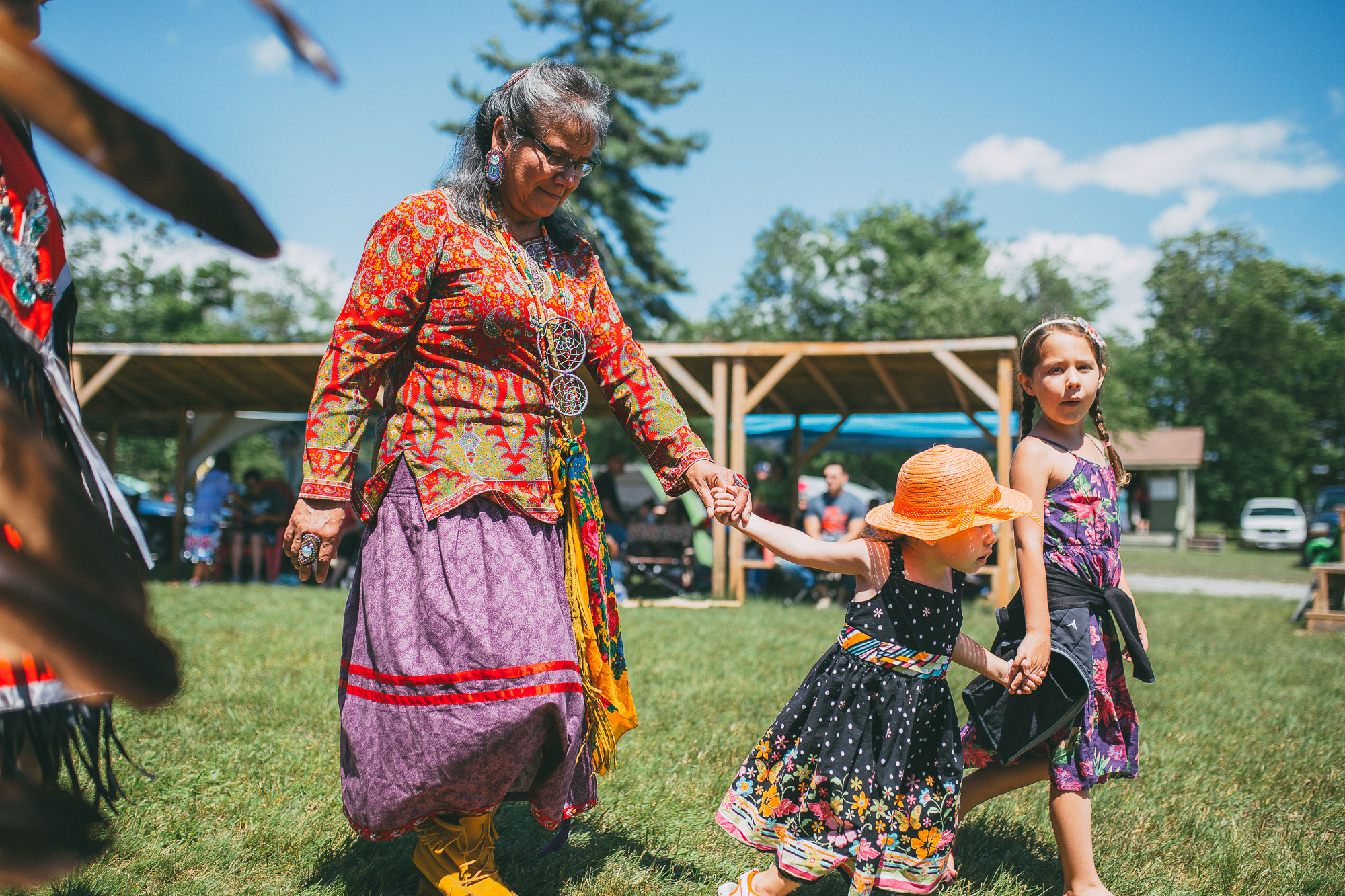
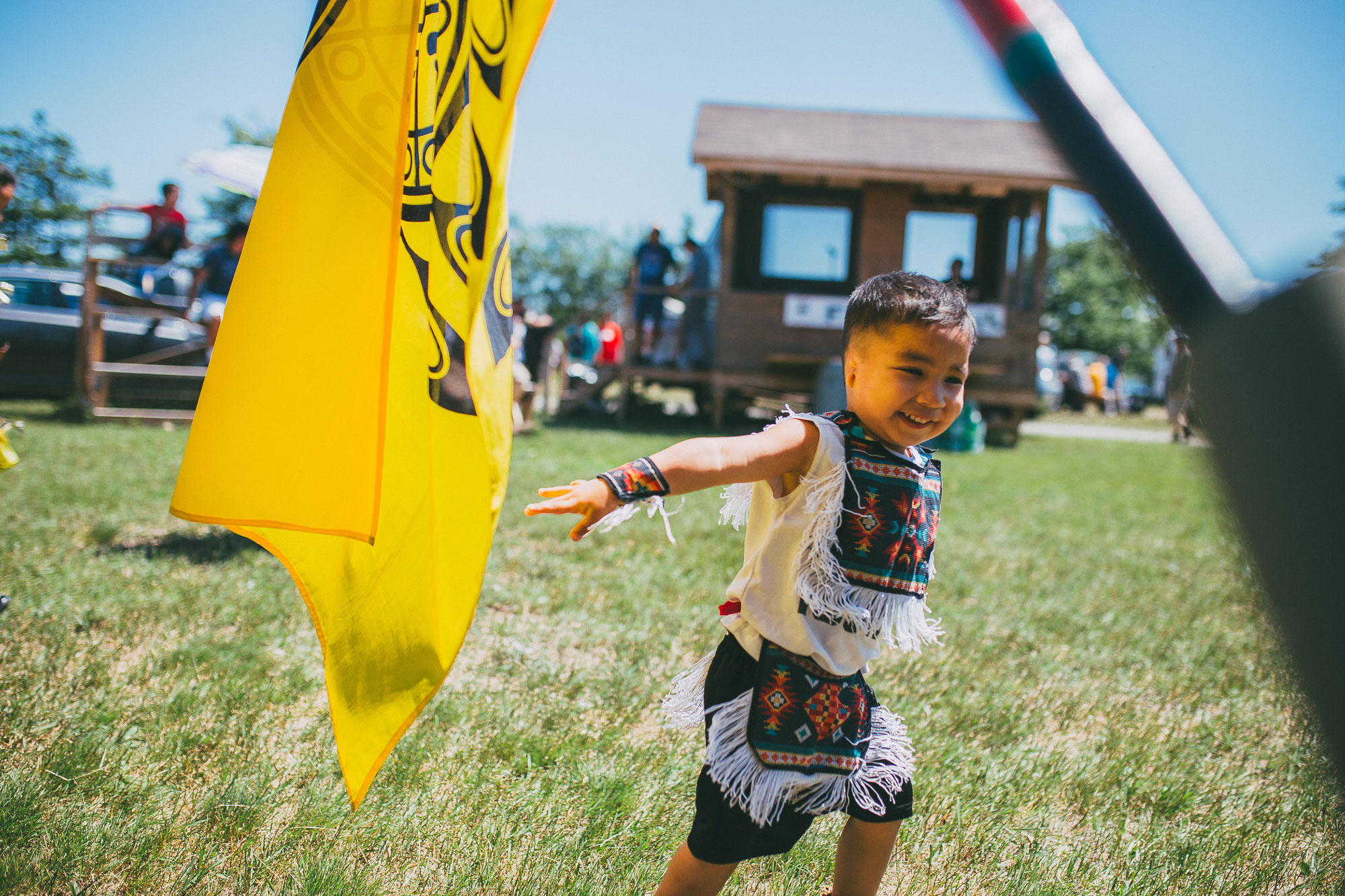
I won’t ever forget that.